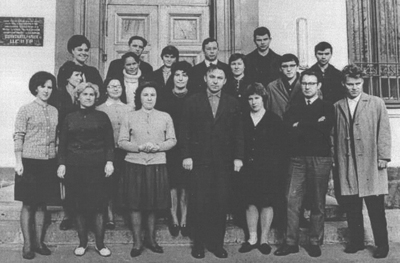|


The beginning of the scientific researches According academician Sobolev personal agreement with Bruk, M-2 should be moved into the Moscow University. But at the USSR Academy of Sciences elections Sobolev didnít voted for Brook. Isaak Bruk was offended and refused to transfer the M-2 to the University. So Sobolev decided to start his own project of a new computer. Brusentsov recalled that Sobolev said upon hearing the news, "Maybe it's for the best. We need to create our own laboratory at the Moscow University computer center to develop computers for use in our schools." Sobolev wanted to develop a small computer suitable for use in university laboratories. He organized special seminar in which some leading young university mathematicians took part. They analyzed the disadvantages of existing computers, looked at instruction systems and architecture, and considered various plans for technical implementation Ė they were leaning towards using magnetic components because there were no available transistors yet, but ferrite cores and diodes were available (vacuum tubes were excluded from the beginning because they could not be integrated into a small computer). The tasks for designing a small computer and its fundamental technical requirements were assigned at Sobolev's seminar on April 23, 1956. Brusentsov was appointed as the supervisor and executive designer of this machine, which would be based on magnetic elements and have a binary system. Then Sobolev arranged him special probation at another computer laboratory headed by Lev Gutenmacher from the Institute of Precise Mechanics and Computer Technology (ITMVT) of the USSR Academy of Sciences. Gutenmacher was working out a computing device based on magnetic amplifiers. "They showed me their computer and supporting documentation, but it seemed to me technically weak," recalled Brusentsov. That is when Brusentsov decided to use a ternary number system. It allowed him to create very simple and reliable elements. The power source requirements were significantly reduced as well because a smaller amount of ferrite cores and diodes was used. But the main advantage was in using a natural number-coding system instead of direct, reciprocal and supplementary number coding.  Brusentsov devised and assembled ternary adder which at once started operation and very soon demonstrated its reliability. Sobolev was satisfied with the project of ternary machine and promised all necessary help. He strongly supported the project and brought in many young assistants to help. By 1958, Brusentsov's 20-person team assembled by hand the first model of the computer. They named the computer Setun', after a river near Moscow University. |
||
|
|
|
|